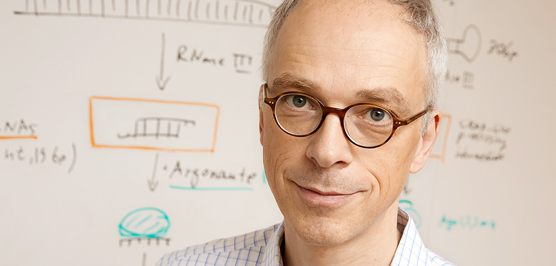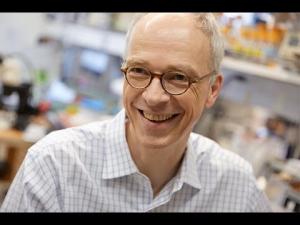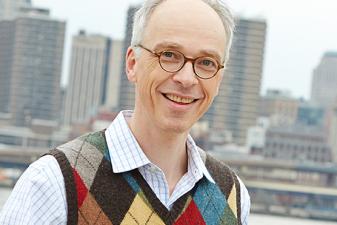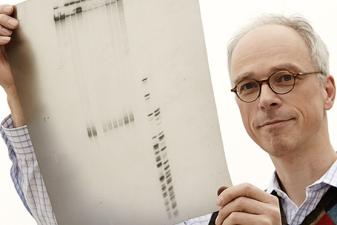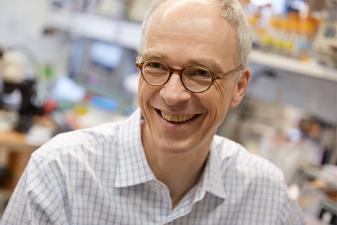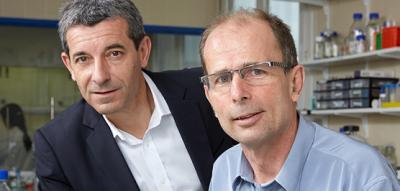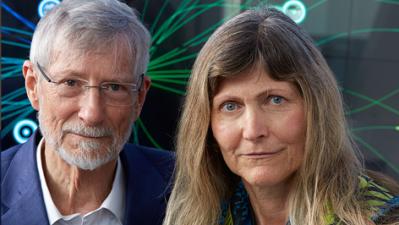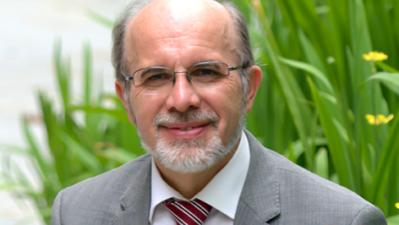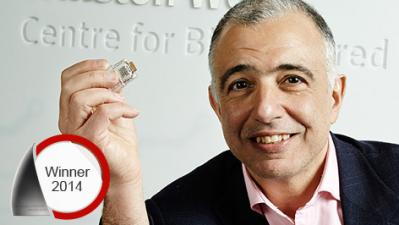Thomas Tuschl
Gene-silencing technique to treat diseases
Finalist for the European Inventor Award 2014
Thomas Tuschl’s groundbreaking method of “switching off“ human genes has become a vital tool in developing new ways of diagnosing and treating conditions from haemophilia to high cholesterol. The biochemist succeeded in adapting a gene-silencing technique known as RNA interference (RNAi) for use in human cells.
The proteins built by our cells are necessary for our biological functions. However, when a gene gives instructions that differ from the typical blueprint, the incorrectly built proteins can cause a variety of diseases and conditions. Halting the activation of disease-causing genes can help prevent certain diseases.
Tuschl’s research exploited the specific function and behaviour of ribonucleic acids (RNA), which regulate the amount of proteins created in a cell. His breakthrough was introducing double-stranded RNA of a very specific length into a cell – large enough to induce RNAi and thus silence the target gene, but small enough not to trigger the cell’s self-defence system and cause side effects. Tuschl’s invention lays the foundation for many promising therapies and has greatly advanced our understanding of human genetics.
Societal benefit
Today, RNAi applications are fundamental to blue sky research in the field of genetics, and part of the standard tool-kit of laboratories worldwide. Meanwhile, diagnostic and therapeutic innovations are in development by Alnylam and other biotech companies. Early laboratory successes in various diseases have yielded encouraging results. Millions of people stand to benefit from RNAi in the future.
Economic benefit
US company Alnylam, which Tuschl co-founded in 2002, has exclusively licensed the rights for his method. He still acts in a scientific advisory position for this company. RNAi biotech start-ups have garnered billion-dollar investments from different sources, including large pharmaceutical companies. Alnylam attracted pharmaceutical giant Roche, which bought a non-exclusive licence to their technology in 2007 in a deal reputedly worth US $300 million.
No RNAi-based products or therapies have been approved so far, but many are in clinical trials, including 11 developed by Alnylam. The global market for RNAi research reagents, therapeutics, diagnostics, and agriculture was valued at almost US $210.2 million in 2012 and is projected to reach US $290 million by 2018.
How it works
Each gene contains the code for a specific protein, encoded in the DNA. DNA is transcribed into messenger RNA (mRNA), which is transported from the cell nucleus to the cytoplasm where it is decoded and manufactured into protein.
Tuschl adapted a gene-silencing technique known as RNA interference (RNAi) for use in human cells. He introduced specific double-stranded RNA from outside a cell which had just the right length (21 nucleotides) and structure (2-nt 3’ overhang) to induce RNAi and silence the protein-coding process of the targeted gene, while remaining small enough to avoid triggering the cell’s self-defence mechanism, which would cause side-effects. The method does not eliminate the gene, only its functional product – the mRNA and the protein.
The inventor
Thomas Tuschl is considered to be one of the best RNA biochemists in the world. He grew up in Bavaria and studied and worked at Regensburg University, the Max Planck Institute for Experimental Medicine and Biophysical Chemistry in Göttingen, and the Massachusetts Institute of Technology (MIT). In 2003, he became professor and head of laboratory at Rockefeller University in New York. In 2005, he was named an Investigator of the Howard Hughes Medical Institute.
Did you know?
Tuschl’s method is just one example of a number of groundbreaking advances in medical biotechnology fuelling hopes of developing radically new treatments and therapies for genetic disorders. Not only does this turn biotechnology into one of the most innovative fields of the 21st century; medical or “red” biotechnology could also become a growth engine of our times.
Inventors revisited
In 2020, the EPO reconnected with former finalists and winners for their views on trends in innovation and intellectual property, and a rare glimpse at cutting-edge new research and inventions.
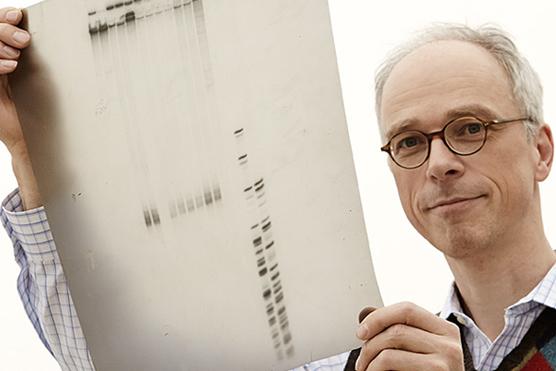
The future of RNA based research
Thomas Tuschl is a world‑leading biochemist. He invented a gene‑silencing technique called RNA interference (RNAi) that has been used in medicine. With his invention successfully commercialised, Professor Tuschl decided to return to basic research and focus on a new area: the innate immune system.

Talk innovation
New York is the city that never sleeps but the coronavirus pandemic forced it into hibernation. Resident and world-leading biochemist Thomas Tuschl took up the fight, exploring potential new treatments. The European Inventor Award finalist is also pushing boundaries that may lead to solutions for autoimmune diseases.
Media gallery
Contact
European Inventor Award and Young Inventors Prize queries:
european-inventor@epo.org Subscribe to the European Inventor Award newsletterMedia-related queries:
Contact our Press team#InventorAward #YoungInventors
